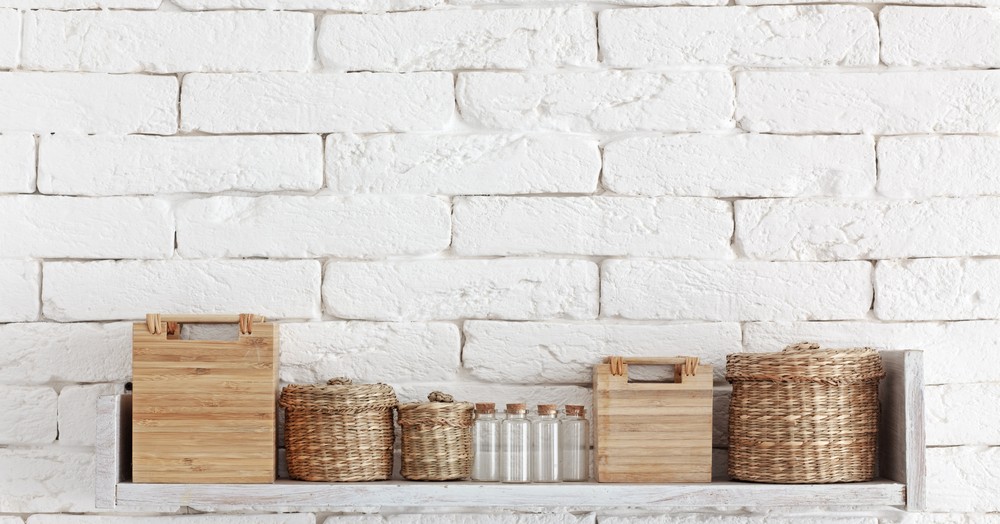
Clever storage suggestions to declutter and organise your home
Moving into a new home?
If you are looking for a new home to move into, carefully assess the property before buying. Think about your storage and lifestyle needs, so you’re sure that you are choosing the best option for you. If necessary, write down everything you need from a home or consult a professional to help you out.
How to avoid piling up
Before you start creating in-house storage spaces, think about your home for a moment. Do you really need that extra space? Many families often have a lot of items that have piled up over the years and that take up a lot of space in their homes. So, before you start building, try decluttering your home first. Do it systematically, room by room, so it doesn’t overwhelm you. Get rid of all the items you don’t really need or use, and then you can see the true space situation in your house.
To avoid piling up, include decluttering into your regular monthly clean, or do it once a year. You wouldn’t believe how much space you can get by doing this! Furthermore, forgetting to declutter before packing for a move is one of the most common moving mistakes.
What to do with the items you don’t want anymore?
Depending on the condition of the items, you can either sell them online, donate or recycle. Try to make the best use out of them, rather than just simply throwing them away.
Creating in-house storage spaces
After you go through your rooms and remove all the items you don’t need, it’s time to consider creating in-house storage spaces and ways to maximise your tiny haven. With all the unnecessary items and furniture out of the way, you have a clear idea of where you can install more storage and how much you need.
Hallways
Hallways are one of those rooms in the house you often forget about when it comes to storage and organisation. And yet, they can be incredibly useful. First, think about your shoes – are they scattered around the floor all the time? If the answer is yes, you need to think about creating in-house storage spaces dedicated to your shoes, since they can be a big clutter problem. Here you can think vertically, and get a shoe rack or two, that will help you organise the shoes and get them out of the (hall)way. Organise your shoes by season, and keep those you don’t use now somewhere else.
Another way to add more storage space in your hallway is by buying a console combined with a shoe rack. It can be used for several different items, such as winter/summer accessories like scarves, gloves, sunglasses, umbrellas, etc.
Under the stairs
The understairs space can be used for many different options. Some of the best under stairs design ideas include creating a bookshelf, space for your bikes, shelves for the different fragile items, and even a TV station as an extended part of your living room. Basically, the options are endless, yet this part of the home is often not used well. So, be sure to think about what you need this space for the most.
The bedroom is not only for sleeping
Bedrooms can have other functions in addition to providing comfort at the end of a long day. Since you need more space for all your clothes and don’t want to take up space with wardrobes and other bulky furniture, you can try to create more space with what you already have. For example, if you don’t travel that often, fill those suitcases and use them as storage space. Think about having a storage bed/ottoman bed, which can be a great space for storing beddings, sheets, etc. If you have some free space under the bed, you can buy made to purpose drawers to go underneath it or get plastic boxes that can store a lot of your clothes you don’t use right now.
Extra tip: When it comes to storing seasonal clothes, a big space-saver are vacuum bags. They can minimise the space your coats, jackets, and thick sweaters take during summer months.
Shelves
You need to think vertically when creating in-house storage spaces. Shelves are the perfect way to add some additional space almost anywhere in the house. Think about all the free walls, recesses or any similar spaces that could be filled with shelves. This system can lift many things you have off the floor and make a big difference to your space.
Attic and cellar
Since you don’t use these rooms all the time, utilising them could be an amazing way of creating in-house storage spaces. However, these need to be prepared for use and have the proper balance between insulation and ventilation. This way, you will be sure that the items you store here are protected from humidity and very high/low temperatures in winter and summer.
Need tips for maximising your space or what a buyer looks for when it comes to storage? Get in touch!